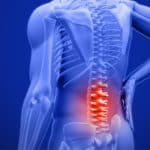For many, back pain and pelvic floor troubles are not just physical obstacles but challenges that govern their daily life.
These issues aren’t just about the pain itself. They can impact the joy of playing a sport, impede a friendly gathering after a game, or even disrupt one’s ability to plan during the week.
The emotional cost is immense, as countless memories and experiences are lost due to these ailments. Often leaving yourself in a state of limbo, not knowing if you’re coming or going, unable to commit to upcoming events because of fear of embarrassment, pain or both.
The Intricate Link Between Back Pain and Pelvic Floor Issues
Ever felt an urge to rush to the restroom when hearing water run and thought it was all about your bladder?
You’re not alone. Surprisingly, a significant connection exists between chronic low back pain and incontinence. By addressing issues in the lower back, there’s potential to regain healthier bladder control.
How?
Your core muscles rise and fall, coordinating bladder movements. If these muscles aren’t balanced, their movement gets disrupted, leading to incontinence symptoms such as leakage or frequent urination.
Oftentimes, this core imbalance arises from low back pain, resulting from habits we adopt to compensate for the discomfort.
Rediscovering Balance & Strength
To tackle these intertwined issues, we need to focus on two aspects: identifying the root causes and adopting effective strategies.
Relieve Tense Muscles:
Data reveals that about 80% of adults face back pain at some stage. Tightness in the trunk muscles exacerbates this discomfort.
Implement daily stretches, like the cat-camel pose or pelvic tilts, using basic equipment like a yoga mat.
These not only counter pain but also fortify pelvic floor health, potentially enhancing incontinence management.
Adopt a Gentle Workout Regimen:
Steering clear of exercise due to pain might seem logical, but low-impact routines like walking or Pilates can be beneficial.
Such activities bolster core muscles, lessen back inflammation, and enhance blood circulation in the pelvic area, promoting better bladder function.
Boost Your Core Strength:
Enhancing the muscles around your trunk is crucial for both back pain relief and pelvic health.
Exercises like planks or the bridge pose are particularly effective. Ensuring correct technique is vital, with variations available for all fitness levels.
Detect and Correct Imbalances:
A mirror can be a diagnostic tool.
Noticeable irregularities like a foot pointing outward or an off-centered navel could be clues to deeper issues.
Recognizing these signals paves the way to address the foundational problems affecting your back and pelvic health.
Reclaim Your Life with mPower Physical Therapy
We recognize the challenges of living with chronic pain, and at mPower Physical Therapy, we’re equipped with the expertise and empathy to guide you toward recovery. Understanding is the first step, and taking proactive measures follows closely.
Our expert team have treated thousands of patients across Dallas and developed the perfect first step towards treatment.
For those eager to make a change, we’re introducing our Pelvic Health Assessment. This one-on-one session with a pain specialist offers clarity, answers, and actionable advice. No more compromising on cherished activities or constantly scouting for restrooms.
To book your Pelvic Health Assessment, contact our clinic at (214) 538-2559 or use our convenient online form.
Remember, it’s not merely about managing symptoms but reclaiming the joy and freedom that pain has robbed. Let’s journey toward a pain-free future together.
Free Advice For Pelvic Pain From Our Expert Team
Visit our mPower Physical Therapy YouTube Channel and watch our expert videos such as Back Pain Treatments to Avoid – Don’t Make These Mistakes
Listen to our popular Podcast such as Leaking With Exercise Is Not Normal
Read our expert blogs such as 5 Myths behind the Pelvic Floor and Female Problems That Your Doctor Won’t Tell You About!







